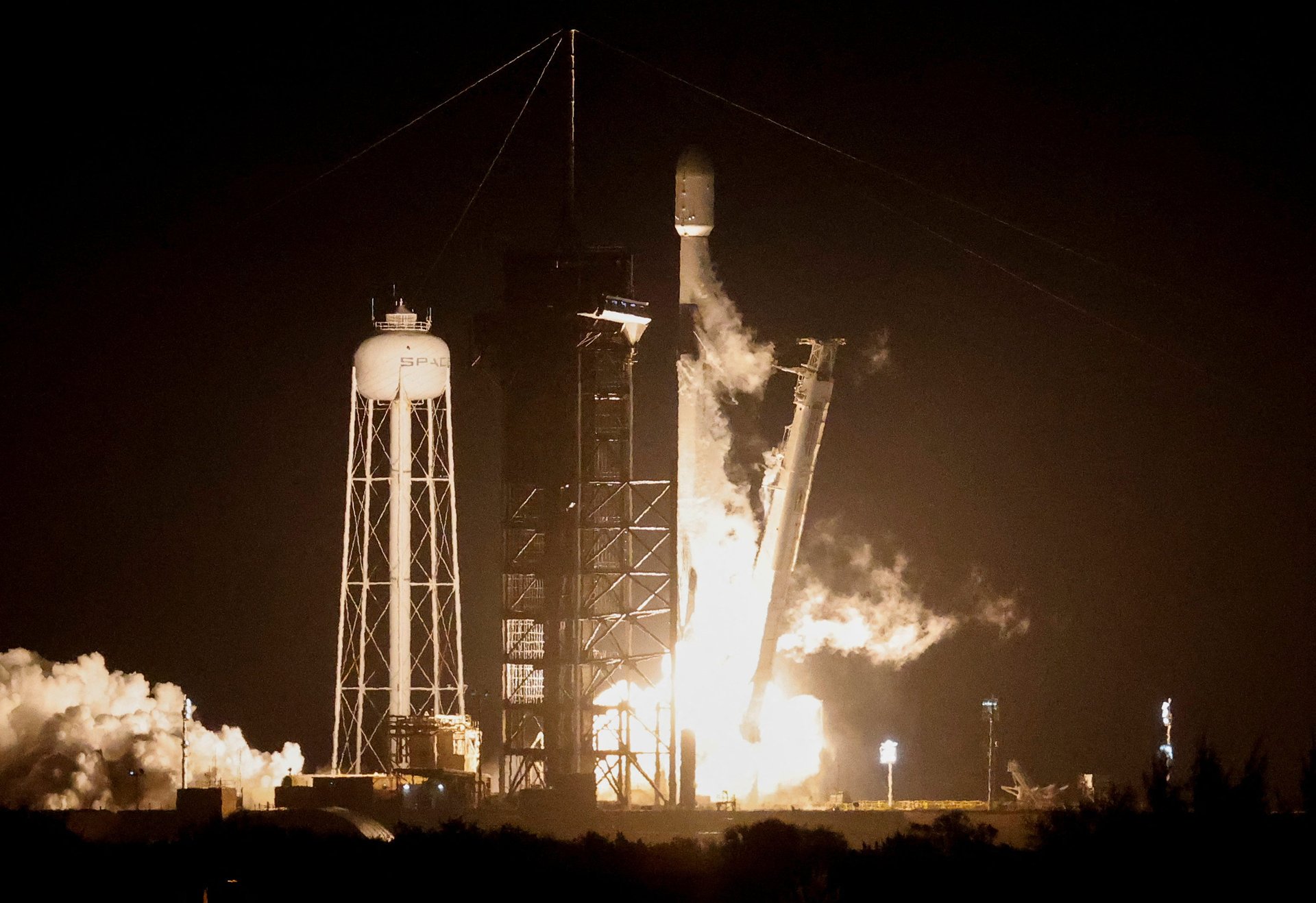The first U.S. moon landing in decades successfully touched down
Intuitive Machines' Odysseus spacecraft landed at 6:23pm ET Thursday

Update: Intuitive Machines’ Odysseus lunar lander successfully landed on the Moon at 6:23 pm ET Thursday.
Suggested Reading
More than 50 years after NASA closed out the Apollo program, a Texas company could land the first commercial U.S. spacecraft on the moon on Thursday, assuming everything goes as planned.
Related Content
Intuitive Machines launched its Odysseus lunar lander last week aboard SpaceX’s Falcon 9 rocket, beginning an eight-day voyage to the moon. The lander is part of a NASA program dedicated to jumpstarting the so-called lunar economy. This endeavor led the agency to pay Intuitive $118 million to put its experiments on the moon.
Controllers will lower the Odysseus’s orbit from just under 60 miles to six miles, before aiming to land about 190 miles from the moon’s south pole at roughly 6:24 p.m. ET. Notably, the spacecraft is aiming for a region home to craters trapped in perpetual shadows, which are believed to house water ice.
The complicated task will be livestreamed by both NASA on YouTube and Intuitive on its website. Flight controllers raised Odysseus’s orbit through a “correction maneuver” on Wednesday night, pushing the spacecraft’s expected landing attempt an hour ahead of previous estimates. The simultaneous livestreams will begin at 5:00 p.m. ET, according to Intuitive.
If the lander — also known as “Odie” and “IM-1" — is successful, the mission will last around seven days. Odysseus is powered by solar-panels and isn’t designed to survive the two-week long cold nights that will appear when the sun sets on its landing site.
The aircraft is carrying a series of instruments for NASA, including gear designed to test new navigation and landing technology and how Odysseus’s exhaust plume interacts with lunar dirt. It’s also carrying 125 miniature moon sculptures designed by artist Jeff Koons and a camera built by by students at Florida’s Embry-Riddle Aeronautical University.
But, should Odysseus fail, it will join the ranks of several other failed lunar endeavors launched by private companies. Pittsburgh-based Astrobotic Technology attempted to land a spacecraft on the moon last month, although it was destroyed on reentry. Japan’s Ispace and Israel’s Beresheet had likewise suffered failures in 2023 and 2019, respectively.
Intuitive stock has surged 283% since Jan. 1, although a failed landing will likely diminish its gains.
